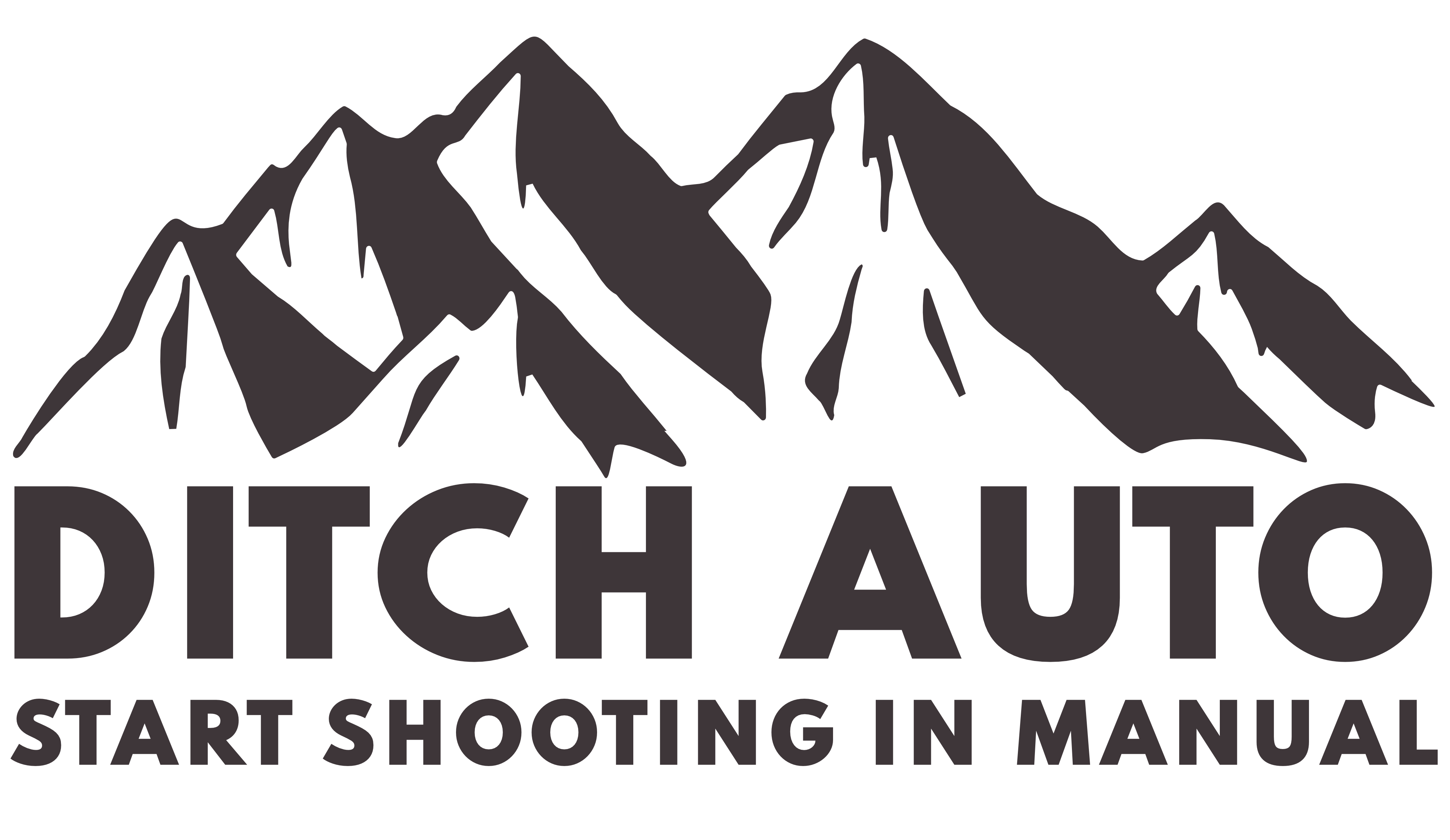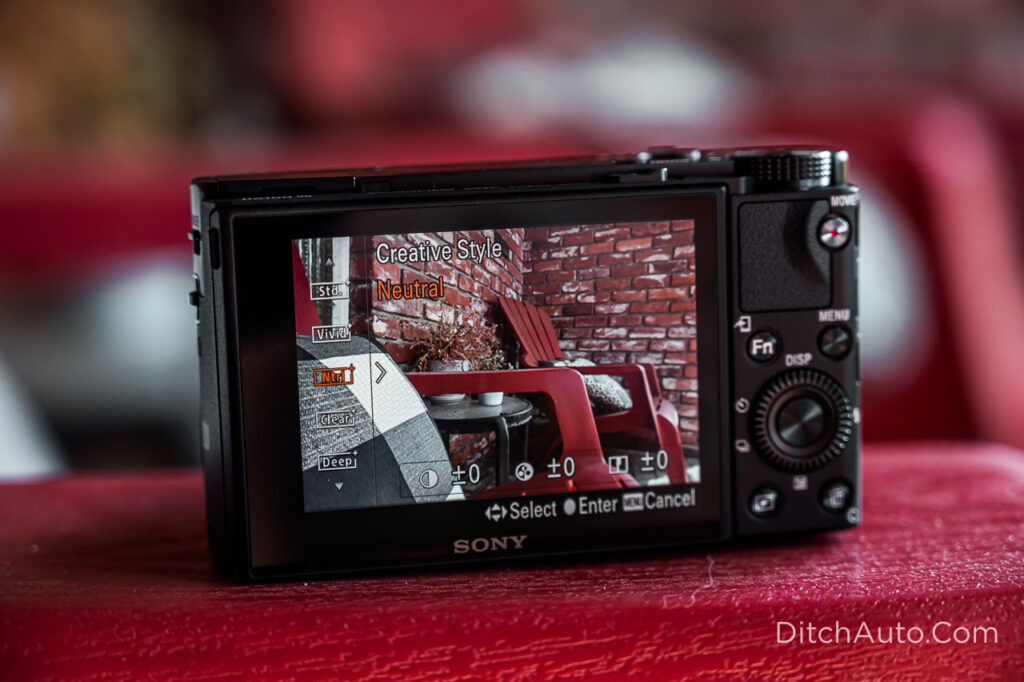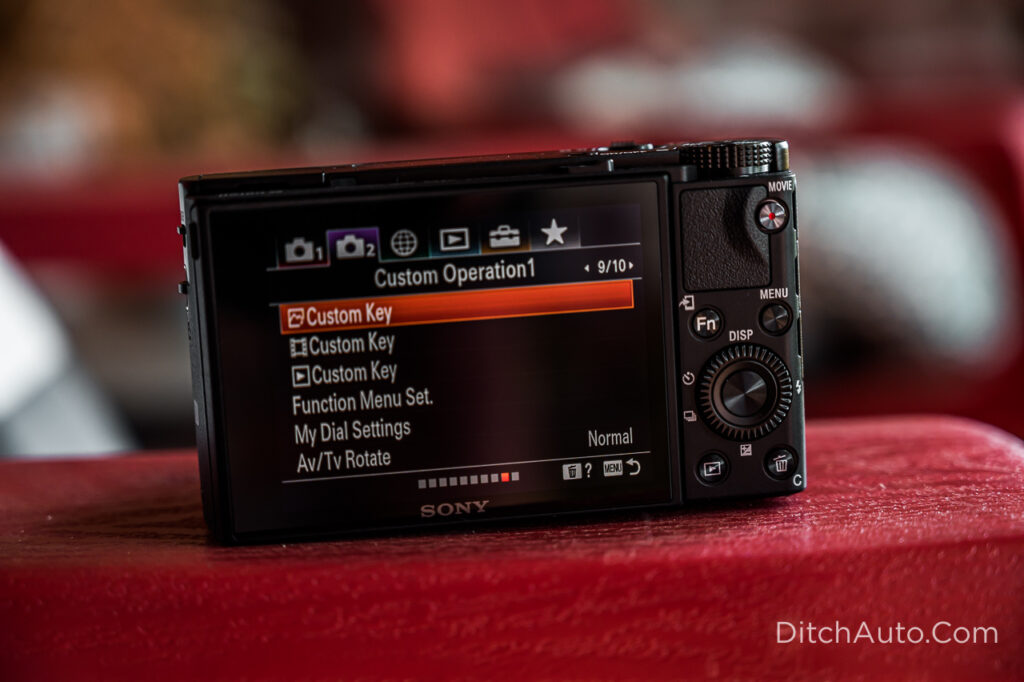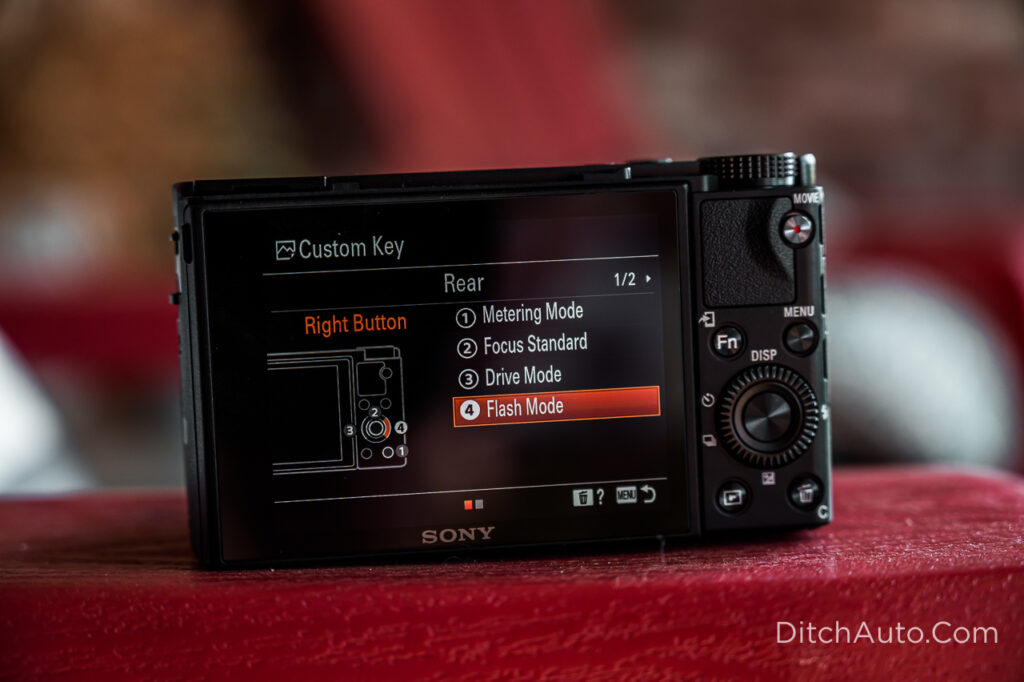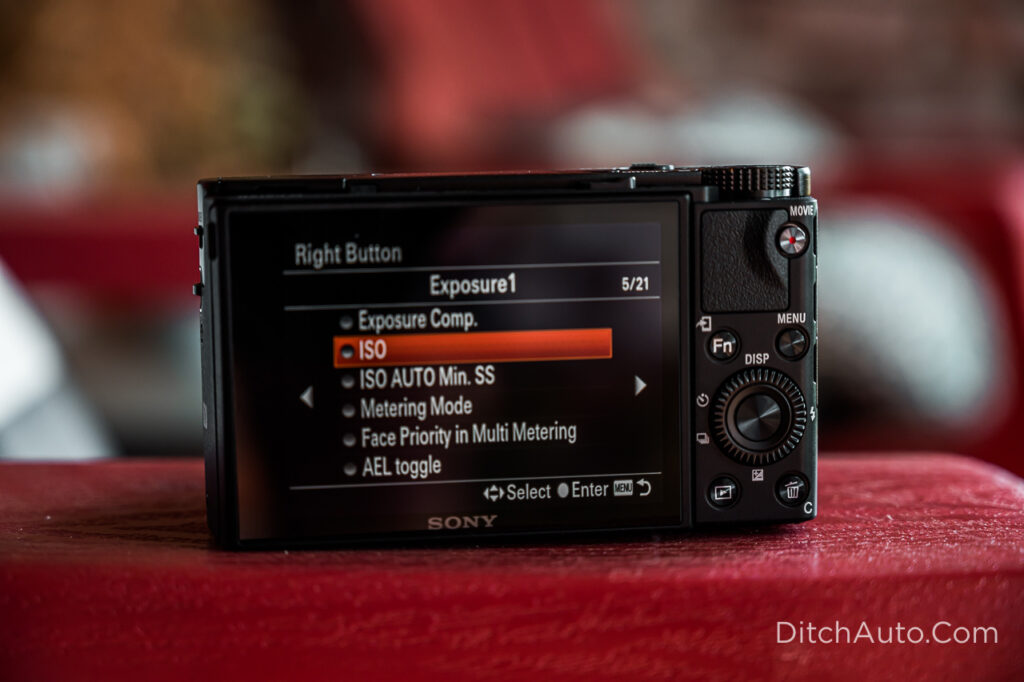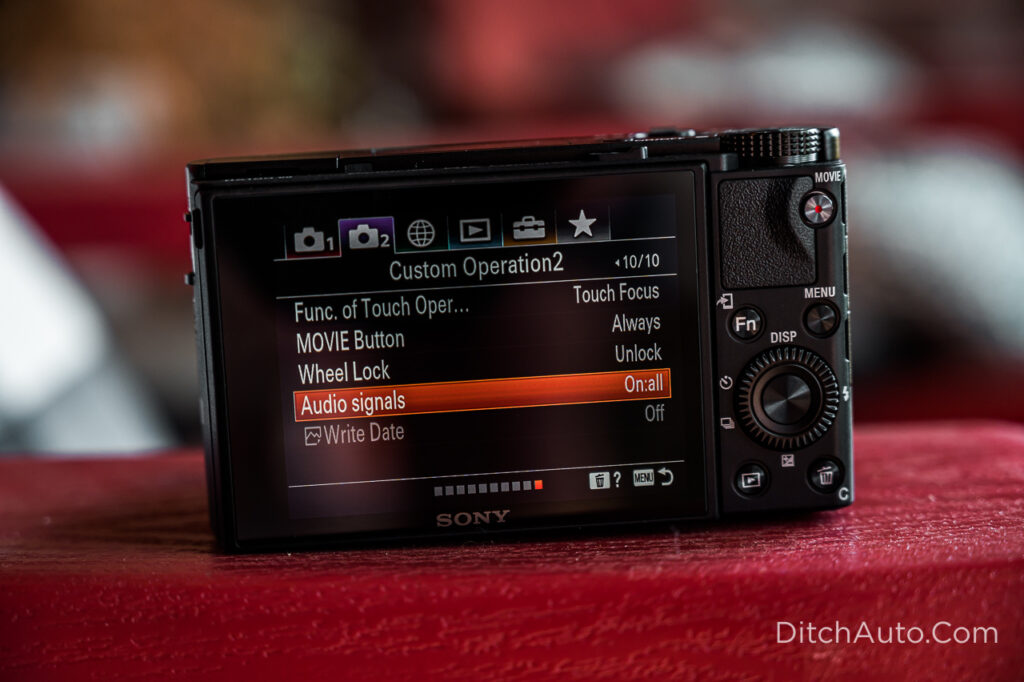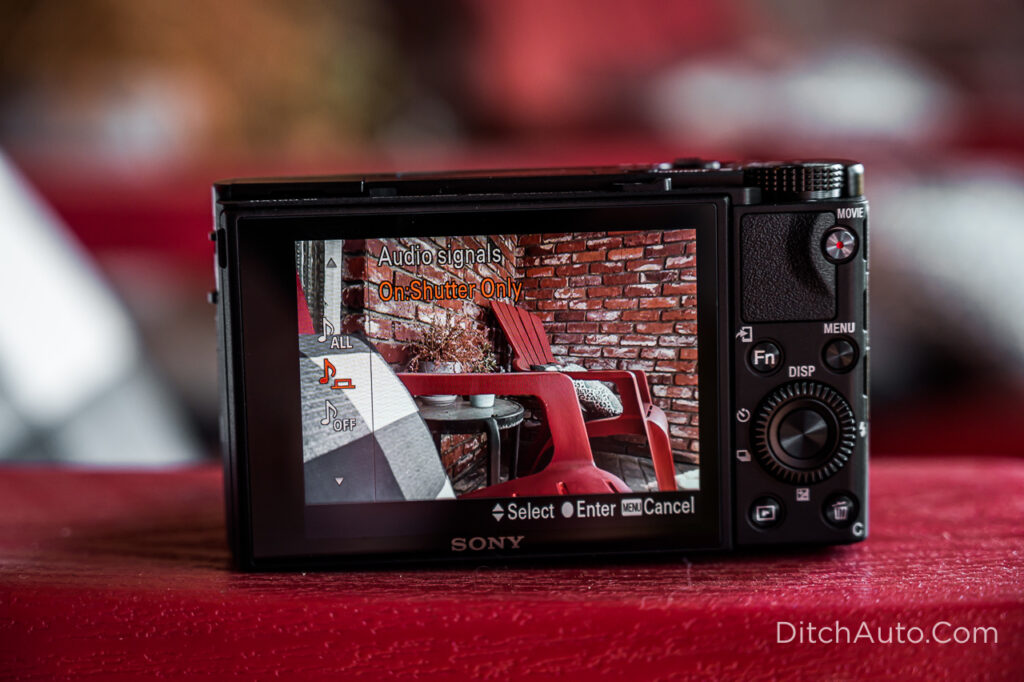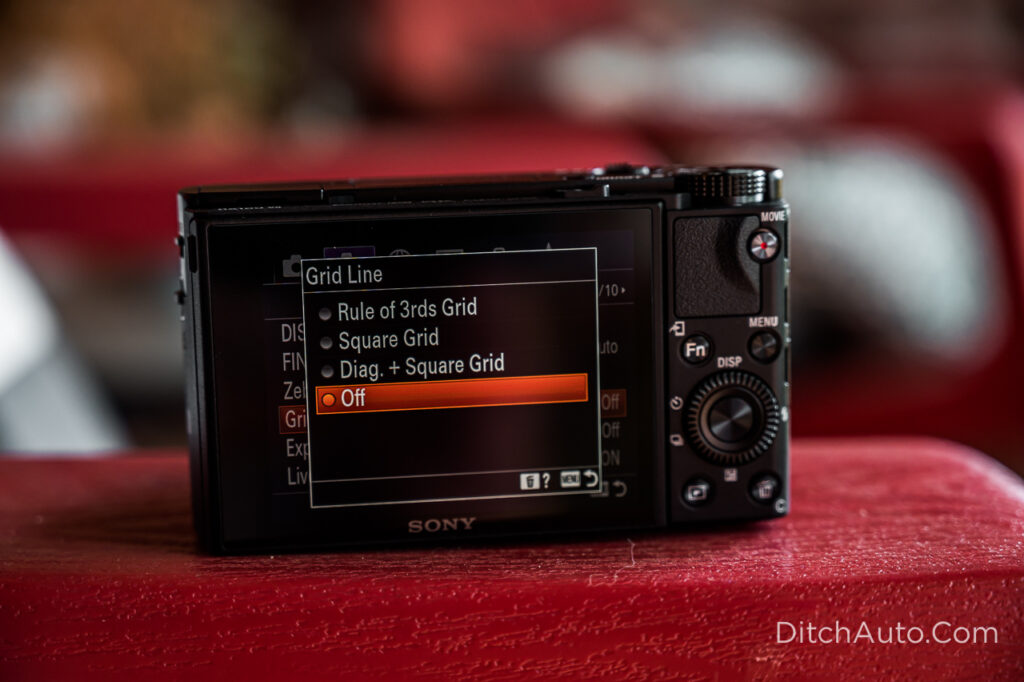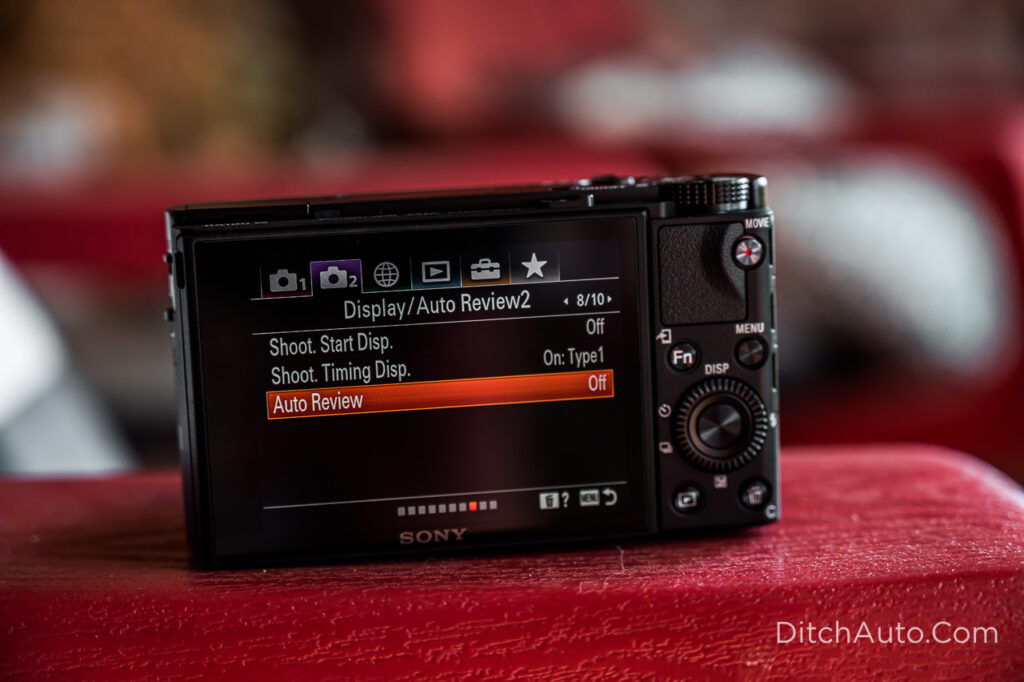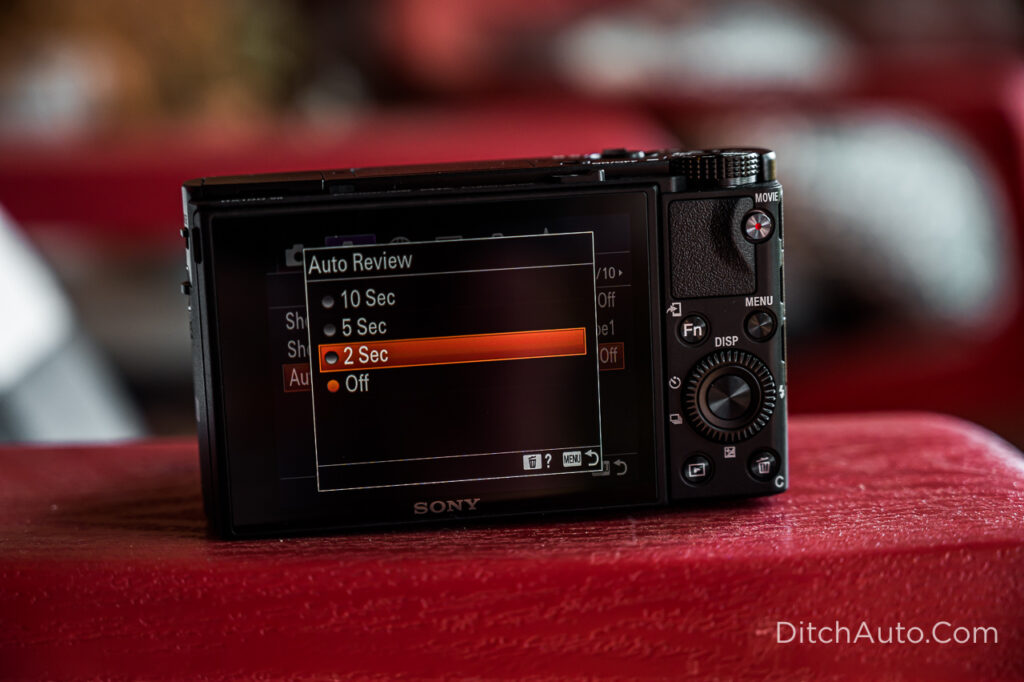Today we’re going to talk about the top settings that I change on my RX100 Mark VII. I just got it in and this is what I do when I get a camera. I change some settings. It’s a fun day when you get a new camera. I’m actually excited about this little camera. Even though I have the previous version of it, I think that there are some things that I’m really going to like, like the zero blackout on the display being able to shoot images fast, I’m just excited to be able to get to spend some time with the camera and bring back my thoughts and share them with all of you. So make sure to click the subscribe button on the channel because I will be putting out some content on this little camera soon.
Product Links:
Sony RX100 VII Camera: http://jerad.link/rx100vii
Camera Cage for Protection: http://jerad.link/rx100viicage
SD Cards I Use: http://jerad.link/64gbprosdcard
Small Camera Bag fits camera with or without the cage: http://jerad.link/lowepronewport30
Before we get started, the first thing that you’re going to want to do, is set the date and time and the appropriate time zone for your camera. Because if you don’t do this, you’re going to end up having issues with those photos when you go and upload them to services like Google Photos. It’s not going to have your photos organized or situated very well and it’s just going to be frustrating. So for me, I go ahead and customize all of this stuff so I don’t have to deal with the frustrations that will come later on.
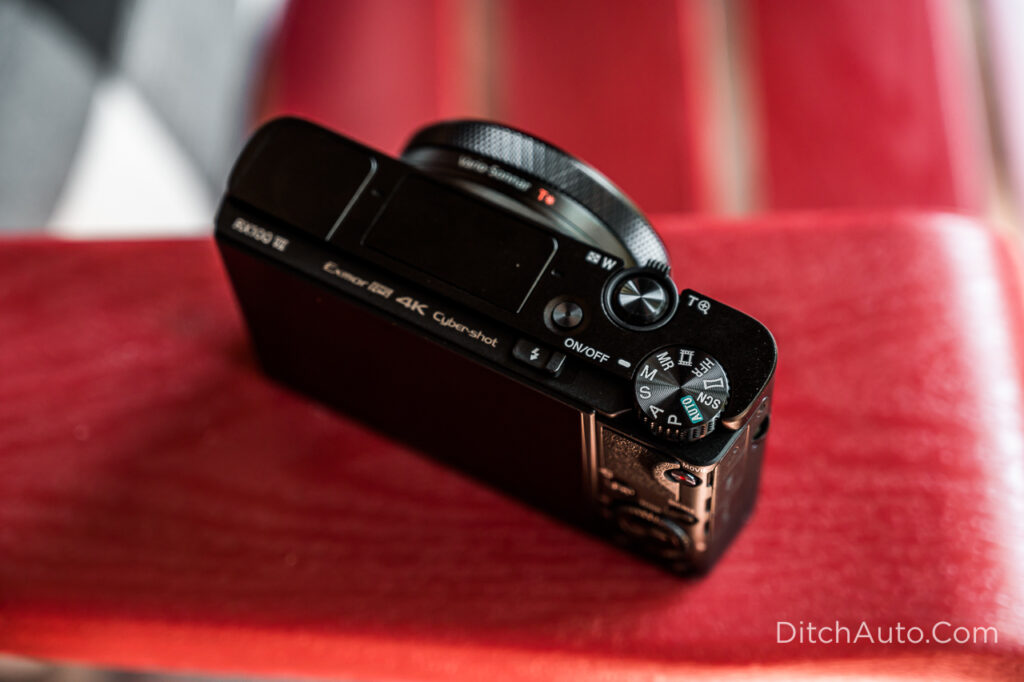
Let’s also put my camera in manual mode. Now, this little camera is absolutely awesome, but one of the reasons that you would spend this kind of money, is so that you get the pro controls that you deserve, and you’re not going to get those unless you shoot in manual mode. Of course, there are aperture and shutter priority modes, which are good, but for me, I prefer using full manual mode so that I can control the aperture, the shutter speed, and the ISO all independently, and make sure that I get the exposure that I’m looking for, not that the camera thinks is best. If you want to learn how to shoot in manual mode, I have a free course for you. Check out Ditch Auto: Start Shooting in Manual Mode.
You should format your SD card in the camera. This is a new camera and even if you’re coming from another Sony, I think it’s important once you make sure that everything is off that SD card, to put the SD card in the camera and format it in camera. Don’t format your SD cards in other cameras and then put it in your new RX100 VII. Don’t format your SD cards on your computer and then use it. You’re going to get the best longevity and life and just the best experience overall, if you format your card in the camera. Because I do that, I don’t have issues with corrupt images, or issues with the SD card becoming unreadable, because I just handle formatting right inside the camera the way that it was designed to be in the first place.
Check out the SD Cards I use: http://jerad.link/64gbprosdcard
#1 Shoot RAW & JPEG Images
All right, so let’s jump into these settings. The first thing I do is go into the menu and change the file format to RAW + JPEG. The reason that I do that is because I want that RAW image for its flexibility. This camera is great, but there’s going to be some things that are little limitations to it because of its sensor size, and I want to make sure that I’m getting the most out of the image that I’m shooting. That means with the RAW file, I can go and take it into an editor and have a lot more room for pulling back details and all of that stuff. If a photo was overexposed, I can pull it back. If it was underexposed, I could bump it up. I can color correct much better with a RAW image.
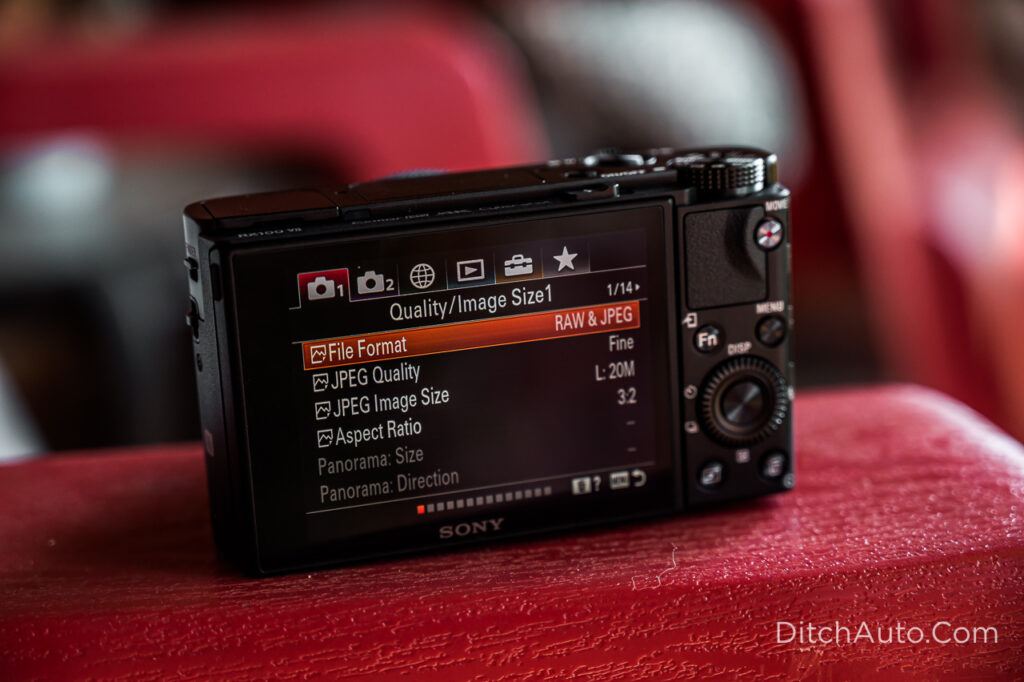
From the Menu, choose File Format 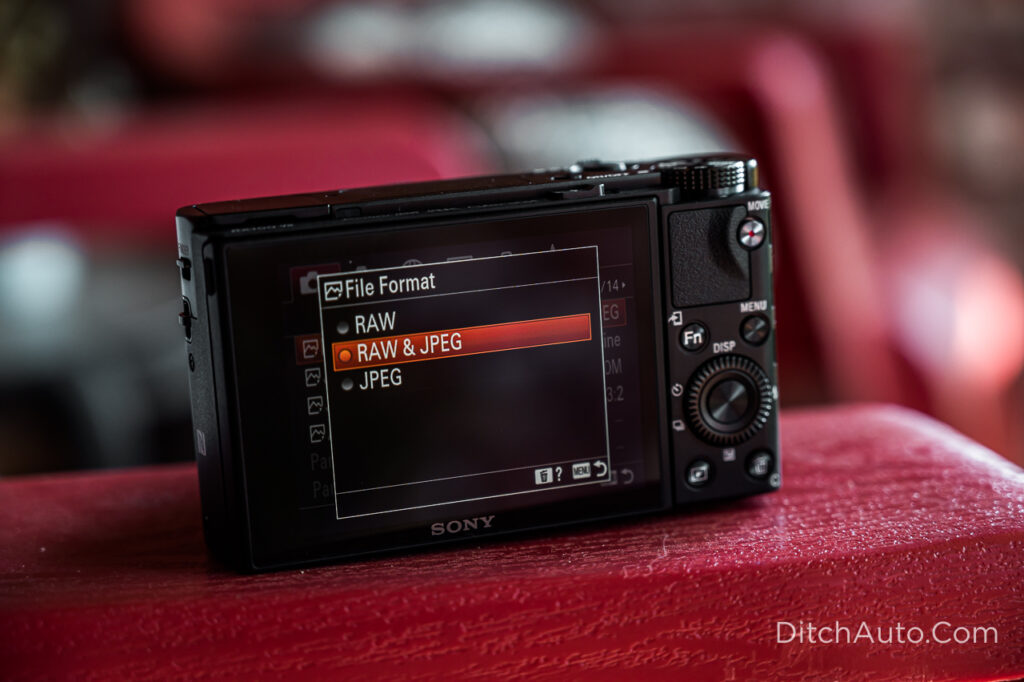
From the File Format Options, Choose RAW + JPG
Now, the reason that I would shoot JPEGs also is for when I want to transfer images from my camera to my smartphone. The RAW images are quite large and the transfer time is going to take a bit longer, so if you’re going to want to transfer a bunch of images over to your smartphone for the purposes of sharing them with others or sharing them on social media, having the JPEGs available is going to make that process much quicker. Now, of course, when you do copy them over, it will convert the RAW to a JPEG for you, but that’s additional processing time, wear and tear on your battery and all that stuff, and it just takes more time. Shooting RAW + JPEG saves you time essentially.
Now I also like shooting RAW + JPEG because if there is an instance where one of your raw images becomes corrupt for some reason, maybe it’s through a conversion process or something, something happens to that raw image, you’d at least have the JPEG as a backup. And I’ve had this happen to me before, which is why I continuously shoot RAW + JPEG. You don’t necessarily have to, but because there’s only one card slot in here, and you can’t be writing your images to two different SD cards, you can only do whatever you can in RAW + JPEG. At least it gives me a little bit of a backup in case an image file did get corrupt. Of course, if your SD card has issues in and of itself, you’re out of luck there. But let’s just try and do as much as we can to prevent problems. I shoot RAW + JPEG so that I could prevent that.
#2 Change Autofocus Settings
Next I customize my autofocus settings. Autofocus by default is going to utilize the entire viewable area that the sensor utilizing any focus point possible. This camera has a lot of them and the autofocus is really great. So one of the things that is being promoted as an advancement in technology in this camera is its autofocus abilities, but for me eye auto focus just doesn’t always get it right. Now, eye autofocus is something that’s really great in situations where there’s only one person or one pet in your image, and there’s only a set of eyes. But if you have multiple people and they’re on different plain levels, sometimes you want to choose a person to be the focal point, choose a subject or whatnot. And eye autofocus more often than not gets it wrong and it’s just not consistent. And when you don’t have an opportunity to just continuously take the shot over and over again, it’s important to make sure that you set the autofocus point yourself.
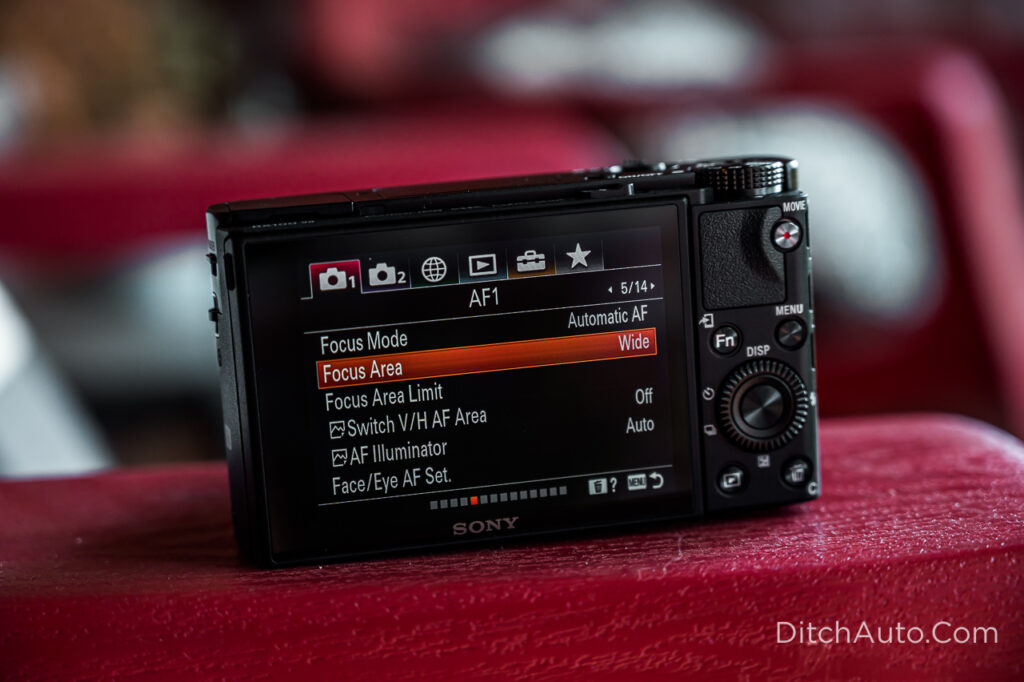
Choose Focus Area from Settings 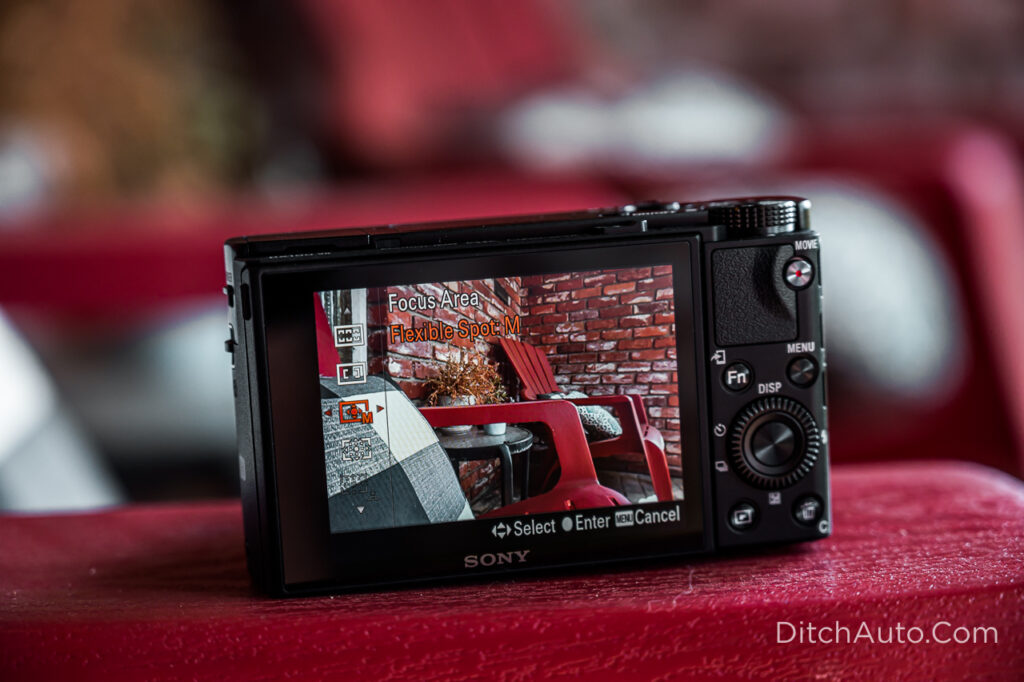
Choose Focus Area Flexible Spot
From the menu, choose focus area, and then go down to flexible spot. I usually leave it on M for medium. What that allows me to do is actually tap in position the focus wherever I want it, or I can actually tap from left to right, and up and down, on the wheel over here and then in the center to apply that focus change and now it’s locked into that position. What that allows me to do is frame up my shot the way that I want it and put the focus point where I want it to be. What’s nice about the touch screen on the back, is that it actually makes that really easy for me just to tap into position.
Of course, there is a really nice EVF on this camera, and in brighter situations I will use the EVF, but in most cases with a camera of this size, I’m using the back screen and it makes it really easy for me just to tap into a focus point, and I like doing that as opposed to just having the entire screen available and letting the camera do all the work itself. I do this on pretty much every camera because none of them are perfect. They can’t read my mind, and they’re often missing the shot and then I miss an opportunity. Nothing feels worse to me than going through all my images and having to delete many of them because they’re shots that the focus wasn’t in the right spot. It’s not that the camera failed to get focus, it just failed to get focus where I wanted it to be. And I would rather force the camera to choose a position and I can move it around the screen and choose that position myself.
#3 Set Creative Style to Neutral
The creative style basically applies to your JPEG images. And because I’m often moving my JPEG images from my camera over to my smartphone to edit, I would rather have that image be a little bit more flat, and I don’t want the creative addition that the camera throws on that image. Now, it’s not necessarily a bad thing, but you’re going to want as much out of that image as you can as a JPEG, and if it adds a bunch of contrast and saturation to the image, when you move it over to your smart phone to edit, you’re not going to have all of that flexibility.
Now, of course, you can move RAW images over from your camera to your smartphones, so you can just edit the RAW images, but those are bigger files. They’ll clog up your phone if you don’t have a ton of storage. I would rather just have that JPEG image be a little bit more neutral, so I change the creative style down from standard to neutral. And you can even go to clear, but clear doesn’t really work for me. I found that neutral is a little less contrasty and that makes it much easier for me to go and apply the changes in some form of a photo editing app.
So even if you’re just taking your images straight into Instagram and making your changes in there by applying a filter or something like that, the filter is going to look much better applied to a neutral color style image as opposed to standard, because it’s going to have more contrast room to play with. It’s not going to be stacking contrast on top of contrast. So I recommend moving that over to neutral.
#4 Set Video File Format to 4K
Moving over in the menu into movie file format, I always go and set the file format to 4K. I’ve been shooting everything in 4K for a few reasons. Number one is that it just futureproofs my content and things that I’m filming. And the next is that when people are viewing content, most of the time now it’s on something that is higher resolution than standard HD. So I want my content to come through clear as possible. And so anything that I’m shooting in mode video, I definitely shoot in 4K.
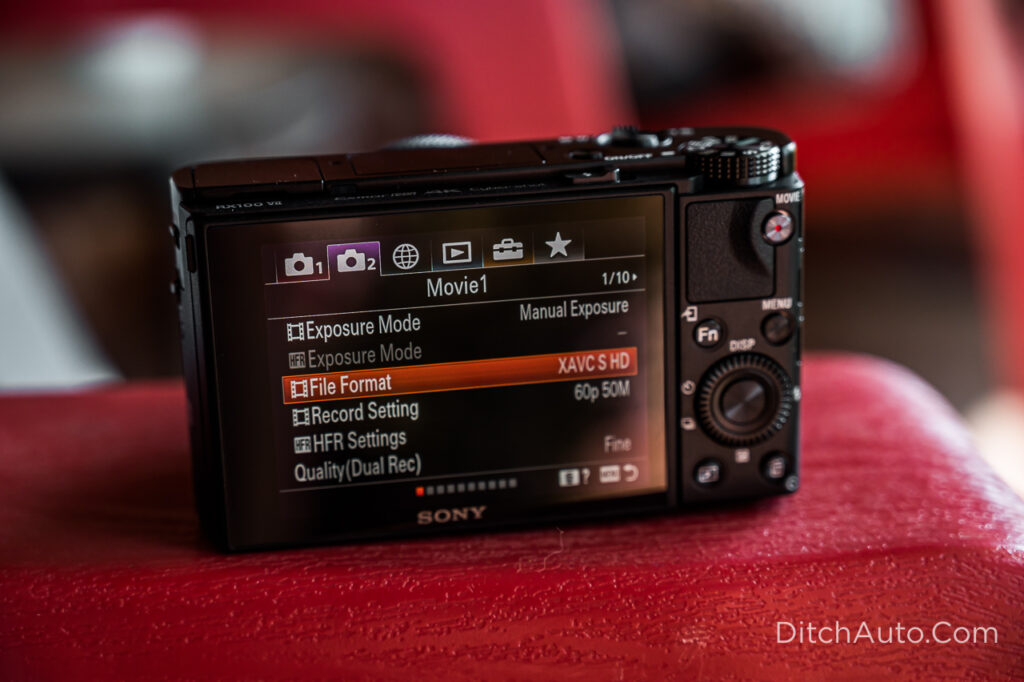
Choose Movie File Format from the Menu 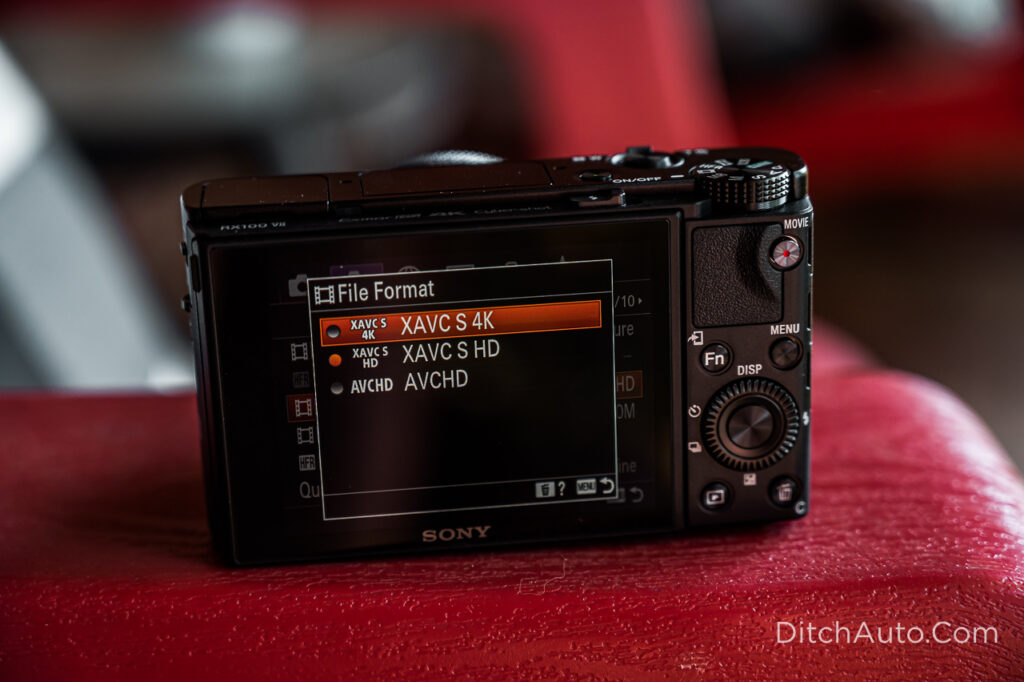
Select XAVC S 4K Mode 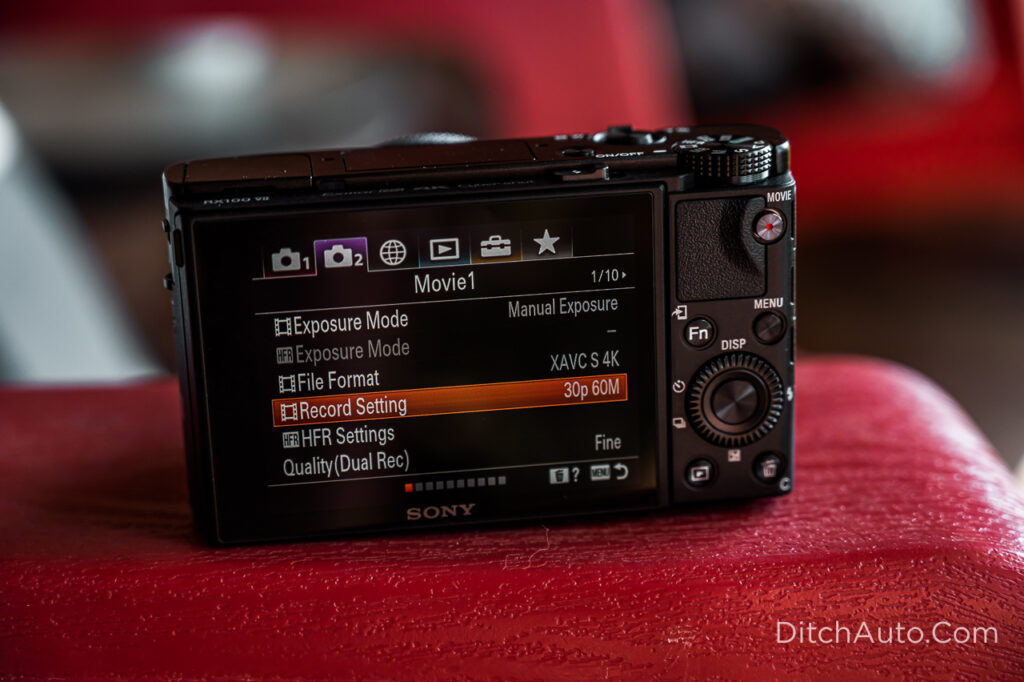
Choose Record Setting from the Menu 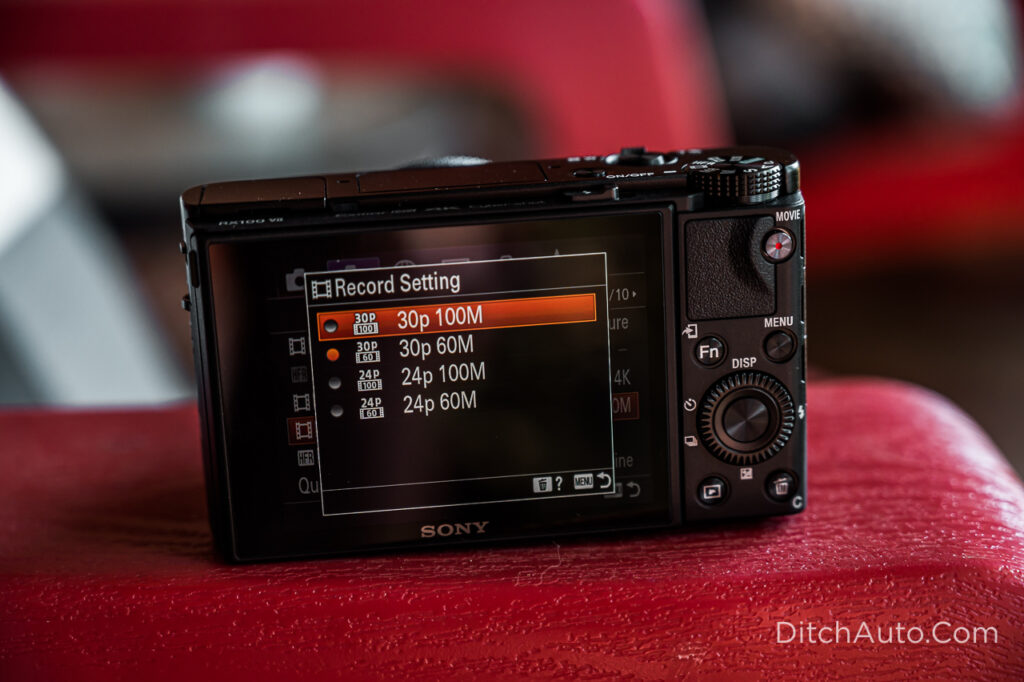
Set to 30p 100M for Highest Setting
I also set the record settings to 30p 100M. I want the highest quality file that I can get. And so I want that depth and that rate to be set higher. I want the 30p because I can of course slow it down to 24p if I want. You can’t really do much with slow motion with 30p footage, but you have a little bit of room if you edit in 24p and you shoot in 30p. If you want those higher frame rates for slow motion, you’re going to need to stay in HD. You can go all the way up to 120p, which is great for slow motion, but you have to stay in HD for that. I opt to shoot in 4K, and just forgo getting some of that slow motion goodness that this camera is actually really good at. Alternatively, you can shoot your slow motion in HD and upscale it to 4K when editing, but you will lose clarity.
#5 Remap ISO to the Control Wheel
Now the next settings that I change have to do with the control wheel on the back. Sony has made some updates over the years and has started to remap buttons and make them operate different. That actually works a little bit better for me. But because I shoot with higher-end Sony cameras as well, such as the a7 line of cameras, the control wheel over to the right actually controls ISO, and on this camera it controls flash settings. Since I rarely ever use the flash and when I do, I don’t really change the settings, I would rather actually push over to the right and have that activate my adjustment of ISO.
Now to do that, go down to number four which is flash mode under the custom key menu, and instead of it being flash mode, I’m going to toggle over and get to ISO and set ISO as number four. So that way, when I’m in the camera, I could just press over to the right and then start to adjust my ISO. I like that much better even though by default the trashcan is mapped to ISO, which makes it nice because you could just tap the trashcan and then tap to rotate to adjust your ISO. But because I’m so used to it being a certain way on my a7 III and my soon to be a7R IV, I’m definitely going to set up this camera the same because muscle memory is muscle memory, and I don’t want to have to do different things for different cameras. If you’re going to change things the way that I did, that leaves the ISO function set to the right and also to the trashcan and you don’t necessarily need that. So now you can take the trashcan and remap it to something else. So look through all the different settings that are available there and decide for yourself what you think would be most useful.
#6 Audio Signals to Shutter Only
Change your audio signals to shutter only. The camera uses an audible shutter noise to initiate shutter to let you know that you took a photo, but it also has a beep for a lot of different things like for when you achieve focus. So when you press the shutter button down a little bit and the camera achieves focus, it beeps. To me, that’s a distraction not only to me but to whoever I’m taking a photo of. And if you’re continuously pressing that button down and the camera’s beeping, people think that you’re doing something, that you’re taking a picture when you’re really not yet ready to take a picture. And so just disabling that altogether just totally makes sense to me. Just to remove the distraction altogether. Your camera is going to give you visual signals that you have achieved focus. So for me, I don’t need that audible signal. I think it’s kind of annoying to have that audible beep. I would rather just utilize the screen showing me all together by itself. When I press it down, the box turns green. That’s all that I need to know that I’ve achieved focus. So change your audio signals to shutter only.
#7 Change Video Shooting Mode to Manual Mode

Earlier on in this post, we set our camera to shoot photos in manual exposure mode. Now you need to do the same thing for video. I think video is going to be best if you just manually control. Of course that means understanding video settings. They’re a little bit different than how you would set up your camera for shooting photos. You need to go into that video setting on the rotated dial to enable access to the video shooting exposure modes. Once you are in that mode, hit the menu button, and then toggle over to exposure mode which is under the Movie panel. By default it’s set to program auto, and you’re going to need to go just basically up one or all the way down to the bottom of the list and set it to manual exposure. That’s going to allow you to customize your shutter exposure ISO or ISO for both your photos and your video independently.
A good rule of thumb for shooting video in manual exposure is to set the shutter speed to double your frame rate. If you are shooting at 30p, set the shutter speed to 1/60th. You can use your aperture and ISO to get your exposure where you want it. In bright situations you may need an ND filter for your camera to shoot at 1/60th.
#8 Turn on Rule of Thirds Grid
One setting that has always helped me with getting my shot composed well is putting the rule of thirds grid line on. There are some different settings here for the grid lines, you have rule of thirds grid, square grid and diagonal plus square grid. I set it to rule of thirds because it puts nice cross hairs across my screen. It makes it very easy for me to line things up and make sure that I get my image composed the best I can in camera so I don’t have to do a bunch of cropping later. Anytime that I can get the shot right in camera without having to do any more work is great. It saves me time. It means that I can share my image much faster and it’s an all around win for everybody.
#9 Set Image Auto Review to 2 Seconds
The next setting I change is a turning auto review of your image on to two seconds. Now the reason I like this is because when I shoot an image I want a preview back of that image, whether it be through the EVF or on the back of the display. And by default, the camera just prepares to shoot another photo. If I’m continuously shooting by holding the shutter button down, it’s not trying to give me a review of that image. It knows that I’m trying to continuously shoot photos. But when I’m done, when I take my photo, I want to look at the back of the screen or through the EVF, and see the review of that image for about two seconds without having to hit the playback button and go and look at that image. So for me, I turn auto review on and I put it at two seconds.
#10 Set Touch Screen to Touch Panel + Pad
When you are using the pop-up EVF, it’s really nice to be able to move that focus point around with your thumb on the back of the display. What I mean by that is when you’re using the EVF looking through the camera, the screen is going to be turned off on the back. You can put your thumb on the screen and drag it around and move the focus point around, just the same way that you would use like a track pad on your computer to move the cursor around. This saves a ton of time and makes it much easier, but you do need to set up the camera in order to do that. So you’re going to go under setup three and down halfway is touch panel/pad. By default, it’s set to touch panel only. We’re going to go ahead and change it to touch panel plus pad. From there, that turns on the touch pad settings right underneath it. We’re going to go ahead and leave the vertical orientation set to on. We’re going to leave touch position mode set to relative. And because of the way that I use the camera, I’m going to leave it set to the right half.
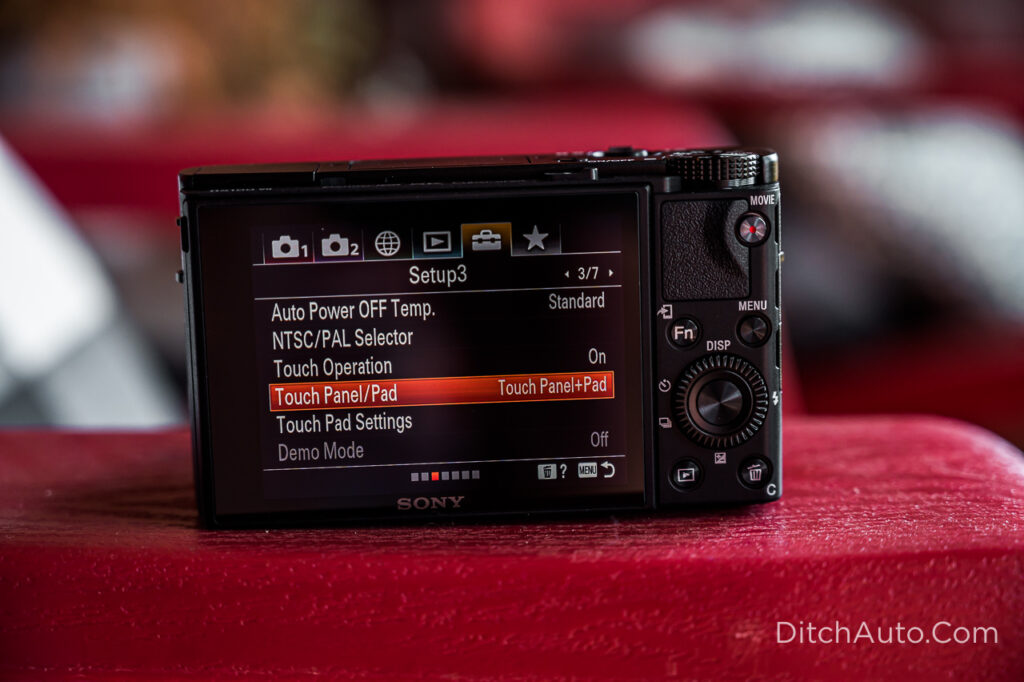
Choose Touch Panel/Pad from the menu 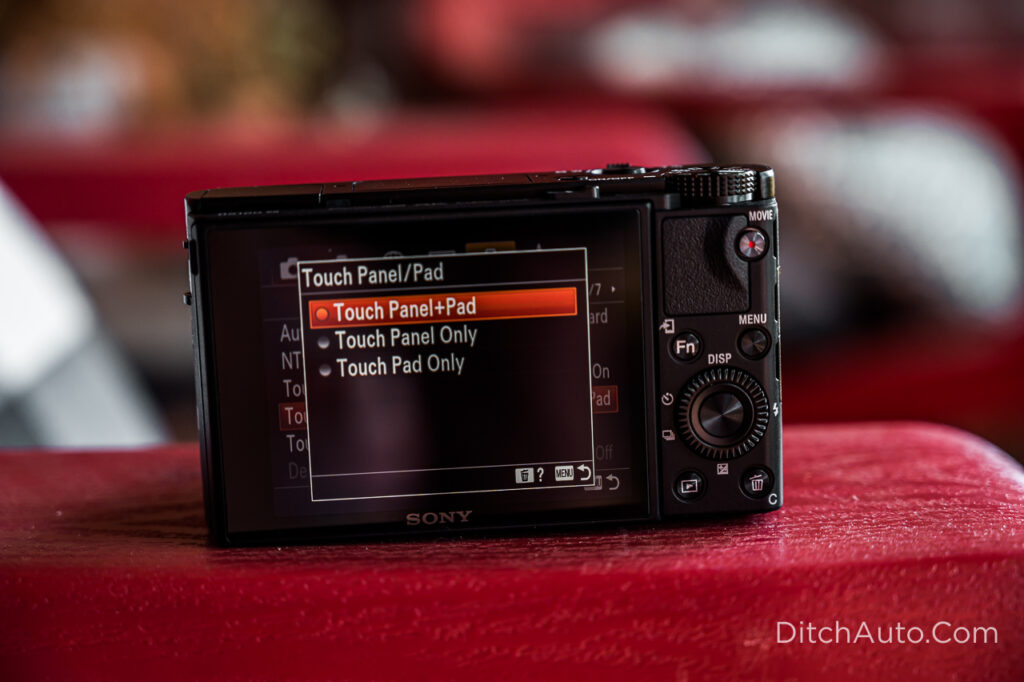
Select Touch Panel+Pad option 
Adjust orientation and operation area as needed 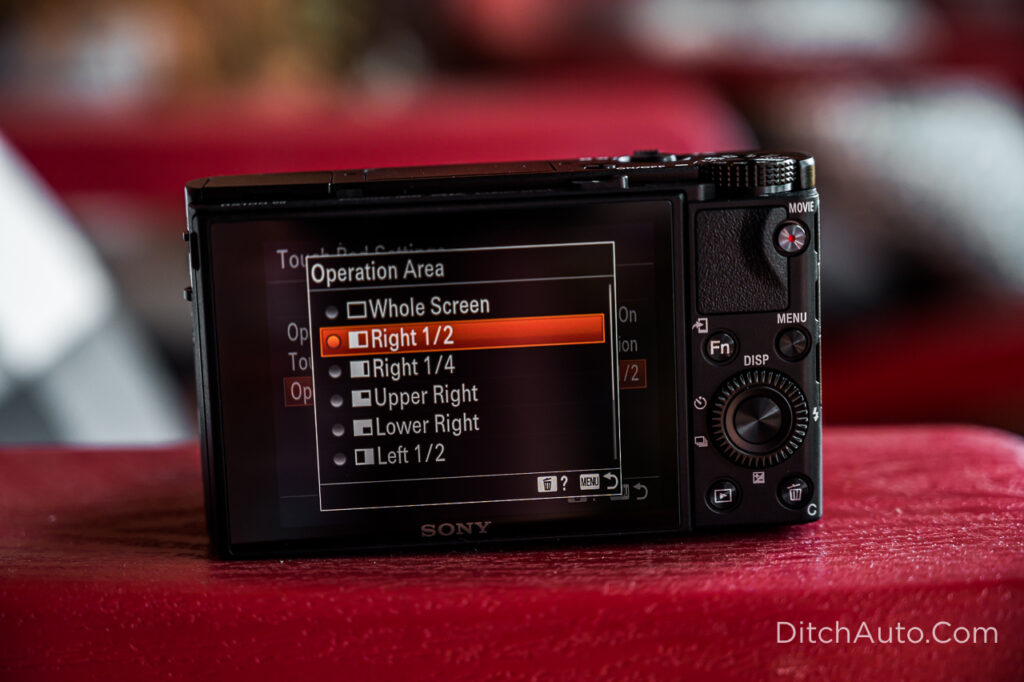
Operation areas available
Holding my camera, I have my left hand cupped underneath it and I would use my right thumb to move that focus point around. Depending on what would work best for you, you can actually change that operation area to the left half of the screen. The reason that it splits it up like that is because if you are using the EVF, part of your face is going to be covering it up. And for me, I would run into my nose if I tried to go further than beyond the end of the left half of the screen. So it’s just much easier to leave it set to the right half. But it does give you all sorts of options from whole screen, to upper portions, lower portions. Depending on how you hold the camera, whether you’re left or right eye dominant in looking through your EVF, you might want to set that up differently. I like it set to right half. That works best for me.
#11 Set Image Copyright Data
Next we’re going to set the copyright data information in your camera to protect your images. The reason that you would want to do this is because we’re uploading and sharing our images in all different ways these days. And when you share an image, you want the copyright data, which is like your name and whatever copyright message you want to attach to that in the image. Now by default from the camera, I put my name and then I put “all rights reserved” as the copyright information. And then if I share that image and somebody happens to grab that image and think about using it, at least my copyright information is in that image. Now, if I give somebody permission to use an image, that’s fine. But there’s been many times that I found my images used without my permission somewhere else.
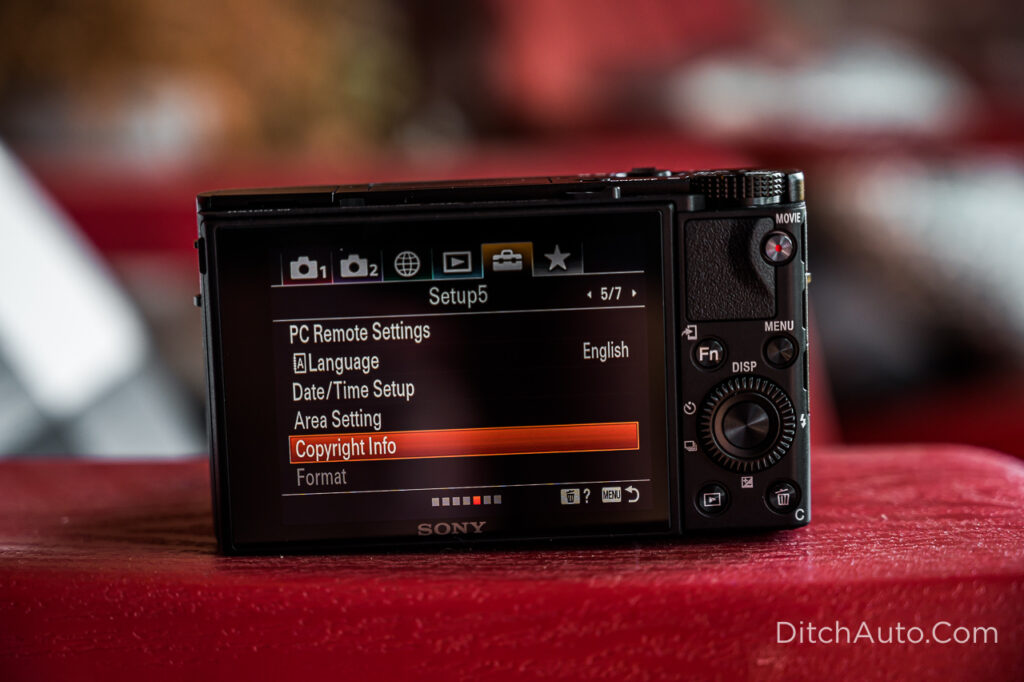
Choose Copyright Info from the menu 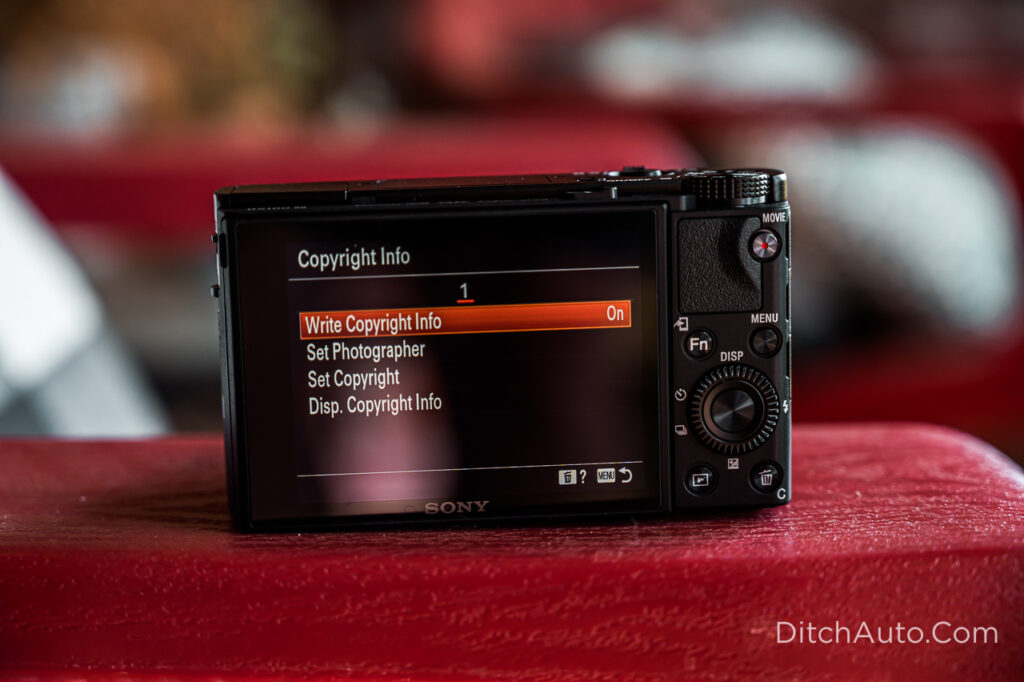
Turn on “Write Copyright Info” 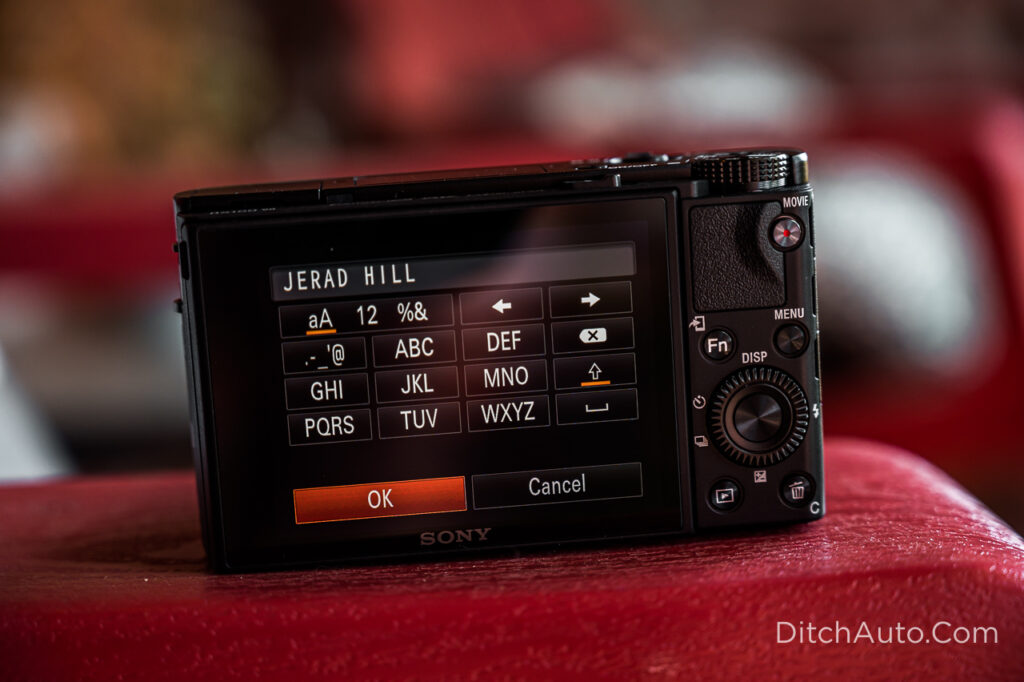
Set your name 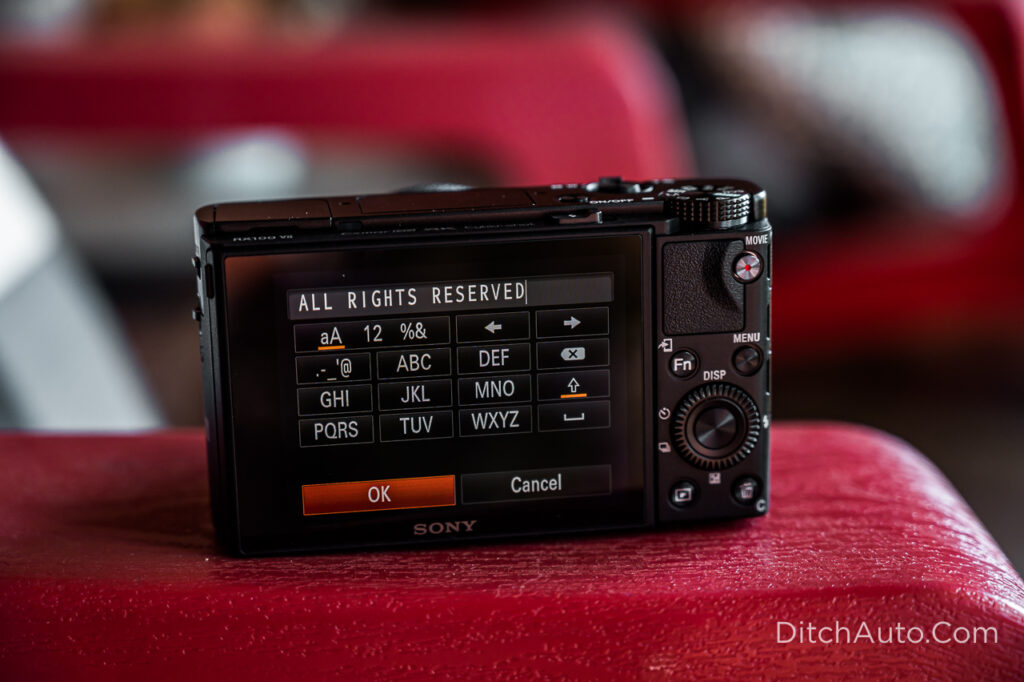
Set your copyright message 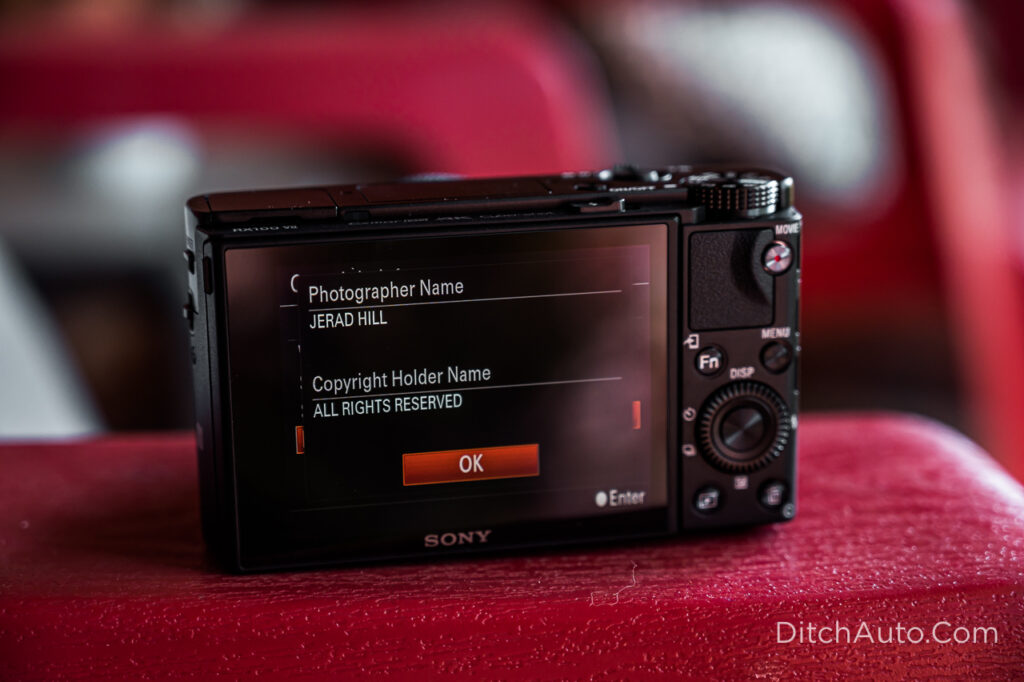
Copyright Info set up on the Sony RX100 VII
If you’re not a professional shooter, you might not be thinking that this is a problem. But what if you took a picture of your children, shared that image to social media, and then some blog decided to use that to promote their product? That has happened to me in the past and I was very frustrated. All I had to do was request that they take the image down because of the copyright that was written to the image. And that was enough. Me speaking that language and saying the word copyright was enough to get them to take it down.
There’s of course more that goes into copyright protecting your images, but in most cases that’s going to be enough to get a person to pull an image down if they so happen to use your image without your permission.
Check out the Creative Commons Copyright Options: https://creativecommons.org/licenses/
#12 Change Image File Prefix
The last thing I’m going to change for now is the prefix on the file name. The reason that I started doing this is because when it comes to the actual image files and I’m sending them over to my smartphone, I don’t have the opportunity to rename them in that process of transferring them over. So I end up with all of these images that start with DSC and I don’t necessarily remember which camera they came off of and all of that stuff. So I typically change the file name prefix from DSC to something specific to this camera. This way I know which camera it came off of without having to go into the EXIF data. There may be a better reason for you as to why to change this. And if it doesn’t really matter because you just import your images and rename the files anyways, by all means just leave it alone. But for me, I found it easier just to go ahead and do that and that way I know whether the image came off of this camera or another camera. I don’t have to bother with going and digging through the EXIF data in order to know that.
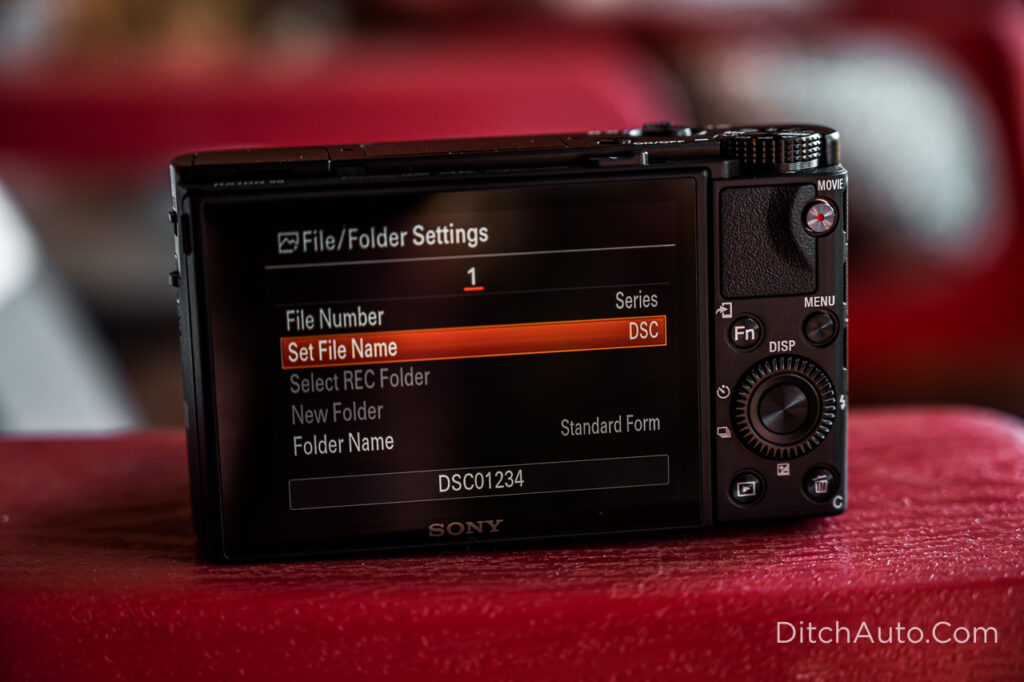
Choose Set File Name under the File/Folder Settings Menu Option 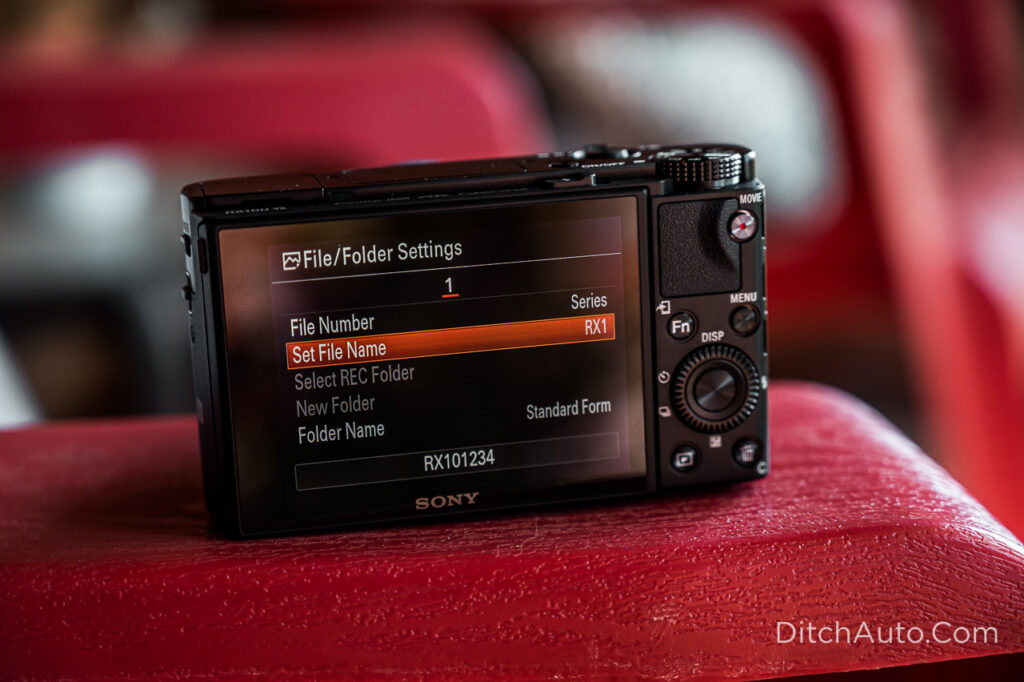
Choose a 3 character prefix for your filename
Another thing that it helps me with is just sorting my images. I can sort my images and I know where they came from based on that prefix, and I guess that’s really important to me because I’m shooting with a lot of different cameras all the time. It might not be that important to you, so if you find another reason why you might want to rename the prefix from DSC to something else, then great. Share that with me down in the comment section below.
Ditch Auto!
That’s going to do it for this post on the top settings to change on your Sony RX100 Mark VII. A lot of these settings apply to previous versions of the camera as well, and I have posts and videos specific to previous cameras on this site and on the YouTube channel. If you’re still thinking about purchasing this camera and you haven’t made that decision yet, I’ll have more information to share with all of you on this camera as I have some time to spend with it. I’m going to do my first shots video once I have had time to take photos and video with it.
I do these first shot videos where I share the initial images and my experiences with the camera. I’ll be putting out that video, and then I’ll come back and do a full review of the camera itself to let you know what I think about it, whether it’s worth the premium price and all that stuff.
If you want to learn more about shooting images and shooting in manual mode, make sure to check out that free course I linked to above.
